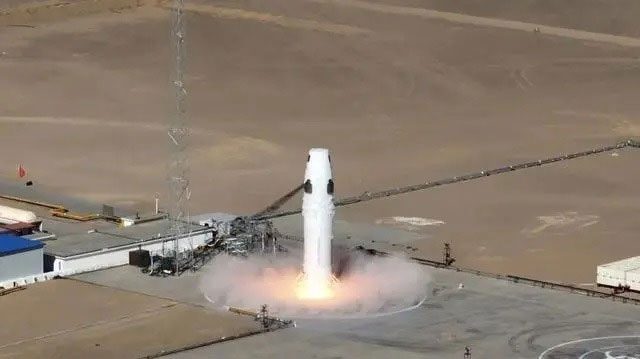On November 2, China successfully tested the vertical takeoff and landing phase of the reusable commercial rocket SQX-2Y, marking a new breakthrough in the country’s space endeavors.

SQX-2Y rocket. (Photo: China Daily)
The SQX-2Y rocket was developed and manufactured by Beijing Interstellar Glory Space Technology. It has a diameter of 3.35 meters and a length of approximately 17 meters, equipped with a liquid oxygen-methane engine. This marks the first time China has tested a full-scale single-stage liquid rocket for vertical takeoff, landing, and reuse.
The test was conducted at the Jiuquan Satellite Launch Center in northwestern China. During the test, the rocket reached an altitude of 178.42 meters, with a flight duration of 50.82 seconds, a landing accuracy of approximately 1.68 meters, and a landing speed of 0.025 meters per second.
Beijing Interstellar Glory Space Technology stated that the test not only validated the development plan for reusable launch vehicles but also gathered important data and provided technical support for the development of medium and large rockets using reusable liquid oxygen-methane.
Rockets can be classified based on the type of fuel used for their engines into two categories: solid rockets and liquid rockets. Liquid rockets have advantages in cost efficiency, fuel consumption, thrust adjustment, and reusability. Currently, countries are focusing on researching and developing reusable commercial launch vehicles. The reuse of launch vehicles not only reduces the hardware costs of launch vehicles but also significantly simplifies ground operations and equipment, thus lowering ground operating costs and increasing launch frequency.


















































